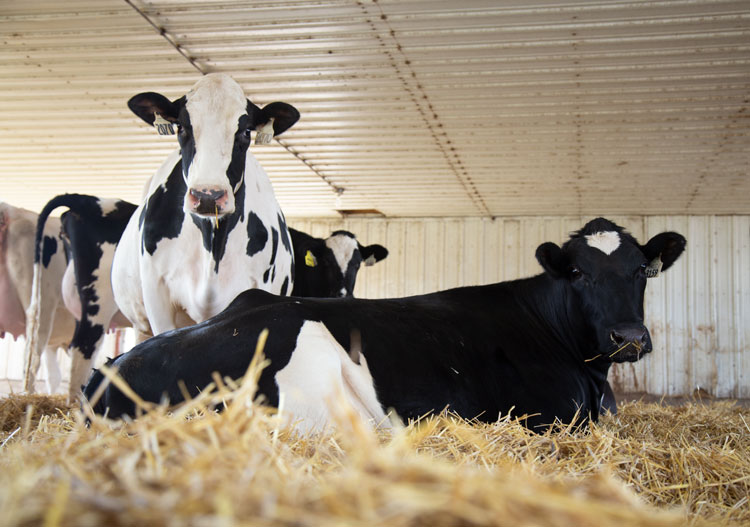
Calcium status surrounding calving is not only important, but it also varies significantly depending on the cow. Many years ago, milk fever (clinical hypocalcemia) was the prominent concern. Today, many farms successfully prevent or manage milk fever cases but still struggle to identify and curtail subclinical hypocalcemia.
In a recent Dairy Nutrition Plus webinar, Cornell’s Jessica McArt, D.V.M., introduced subclinical hypocalcemic animals in four subgroups. “Not all nonmilk fever cows are the same,” said the research veterinarian. In one of her team’s recent studies, cows were sorted into four groups based on blood calcium response following calving.
Normocalcium (normal) cows made up 41 percent of the studied second and greater lactation animals. As shown in the figure, that group’s blood calcium level dropped slightly after calving and returned to precalving calcium blood levels by four days in milk. Transiently subclinical cows experienced a significant blood calcium drop within the first day after calving but then recovered quickly. Persistently subclinical cows had a small but extended drop in blood calcium, while delayed subclinical cows had a significant blood calcium drop and slow recovery.

Groups responded differently
“The persistently hypocalcemic and the delayed hypocalcemic cows were much more likely to get subsequent postpartum disease, and they made less milk in lactation, especially the delayed hypocalcemic cows,” McArt explained.
Conversely, normocalcemic cows did not experience a lot of disease, but they also were not outstanding in milk production. “The transiently hypocalcemic cows were the milk production rock stars of this group,” McArt said. “They make a lot of milk, but they are also putting a lot of calcium into that milk. Based on how fast their blood calcium concentration recovers, their homeostatic mechanisms are working very well.”
Lending a helping hand
Unfortunately, only 19 percent of cows are transiently hypocalcemic; the rest of the animals could use some help. “I think our goal for these cows is that we try to help them as much as we can to have a quick response in terms of calcium homeostasis. Normally we do that in prepartum nutrition,” McArt said.
As far as a postpartum calcium assistant, McArt warned producers to use oral calcium boluses thoughtfully. “I’m not sure blanket administration of calcium boluses is the most effective treatment. I think it helps some cows and hurts others,” McArt elaborated.
Her research group plans on diving into this topic with further research. “I wonder if we are using boluses in the right manner as far as timing. Could we improve use with a different time of administration?” she concluded.








